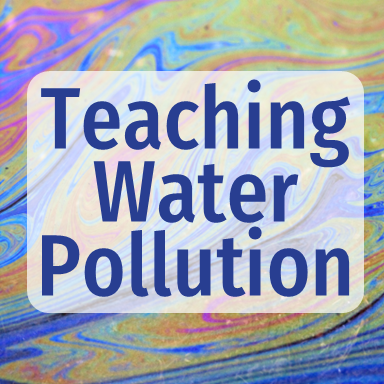
Water Pollution Activities
Teaching water pollution is one of those things that seems simple on the surface. Kids can easily agree that dirty water is gross and littered water is, unfortunately, not a rare sight. But there are many aspects to water pollution that go overlooked and are under-discussed. Water pollution activities for kids need to go deeper than dirty water.
Water pollution is not just about yucky, ugly water. It’s about contaminated drinking water affecting millions of people and microplastics exposing us to harmful chemicals. It’s about thermal pollution from power plants affecting nearby aquatic ecosystems and nutrient pollution from agriculture.
If we’re going to raise environmentally aware kids, water pollution lessons will require more than the “dirty water = bad, clean water = good” simplified approach. Teaching water pollution requires a wider view than we’ve given it in the past. There are a lot of issues at play, and even bigger consequences to ignoring them.
Let’s Talk About It
I love talking to kids about real-world science, and a water pollution discussion is always interesting. You’ll hear lots of misconceptions and narrow thinking. All you have to do to get started is to ask the kids what they know about water pollution.
For instance, ask the kids what types of materials pollute water. Often, they’ll say plastic and garbage. Yup, that’s an easy one.
But then keep going…
- Ask them about poop. “Is poop bad in water?” Of course, they’ll reply that it is. Follow up with, “Well, what about whale poop? Is whale poop bad for the ocean? Should we ban whales?”
- Tell the class that nutrients enter the water all the time. Ask if nutrients are harmful for water. Assuming they have heard the word nutrients relating to healthy, necessary aspects of our food, they’ll probably say that nutrients are not harmful in water. You can add that nutrients cause lots of plant growth in water. Is that bad?
- How about regular dirt? Can all-natural dirt pollute water?
- How about all-natural salt? It’s in the oceans, right? What if it enters fresh water?
- Once water is “dirty” can it become “clean”?
- What are the effects of water pollution? Is it bad for people or just fish?
- How do we know that water is polluted? Can you always see pollution with your eyes?
This discussion – and I’m sure you can add to it spontaneously – really gets kids pondering water pollution with a little bit more critical thinking.
Get the Basics Down
After getting the kids’ attention and interest with the discussion, I assign a very simple FREE water pollution reading and questions. It’s not flashy, but it gets the job done! Students read a simple 1-page article about the top 10 sources of water pollution and then answer text-dependent questions.
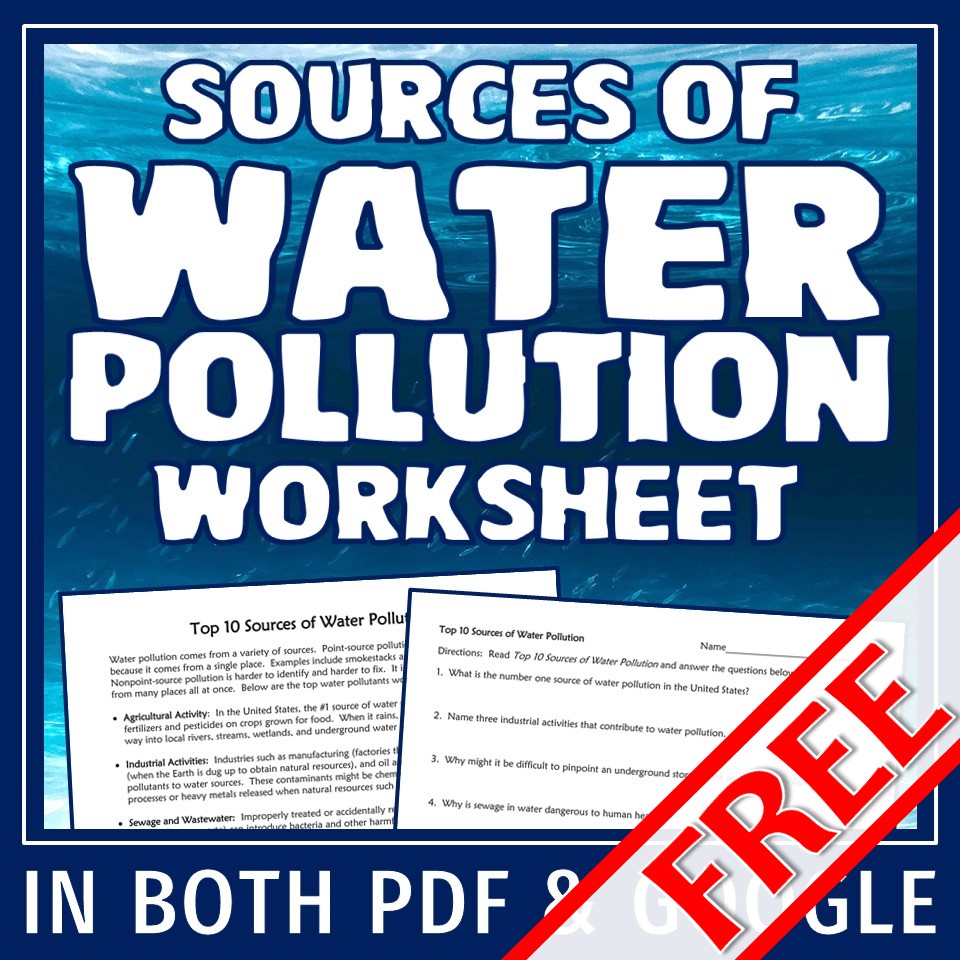
Students will learn that the largest source of water pollution in the United States is agriculture, how industries cause water pollution, what sewage is, and more. This reading gives kids a solid understanding of where water pollution is coming from before we move on to the effects of water pollution and other, more nuanced issues.
Water Pollution Activities with Data
Every teacher today knows that kids are struggling more and more with data analysis. I couldn’t tell you why, but over the last 20+ years I’ve watched these skills decrease. My solution is to work data analysis into different science topics in a way that feels natural. (AKA, not like we are practicing data analysis!) Teaching water pollution provided an excellent way to incorporate data analysis into my classroom.
I created a series of water pollution stations that cover different aspects of water pollution. Each station has the students do data analysis a little differently, anything from interpreting graphs to analyzing data tables. The kids stay engaged with the information because each station is different than the next.
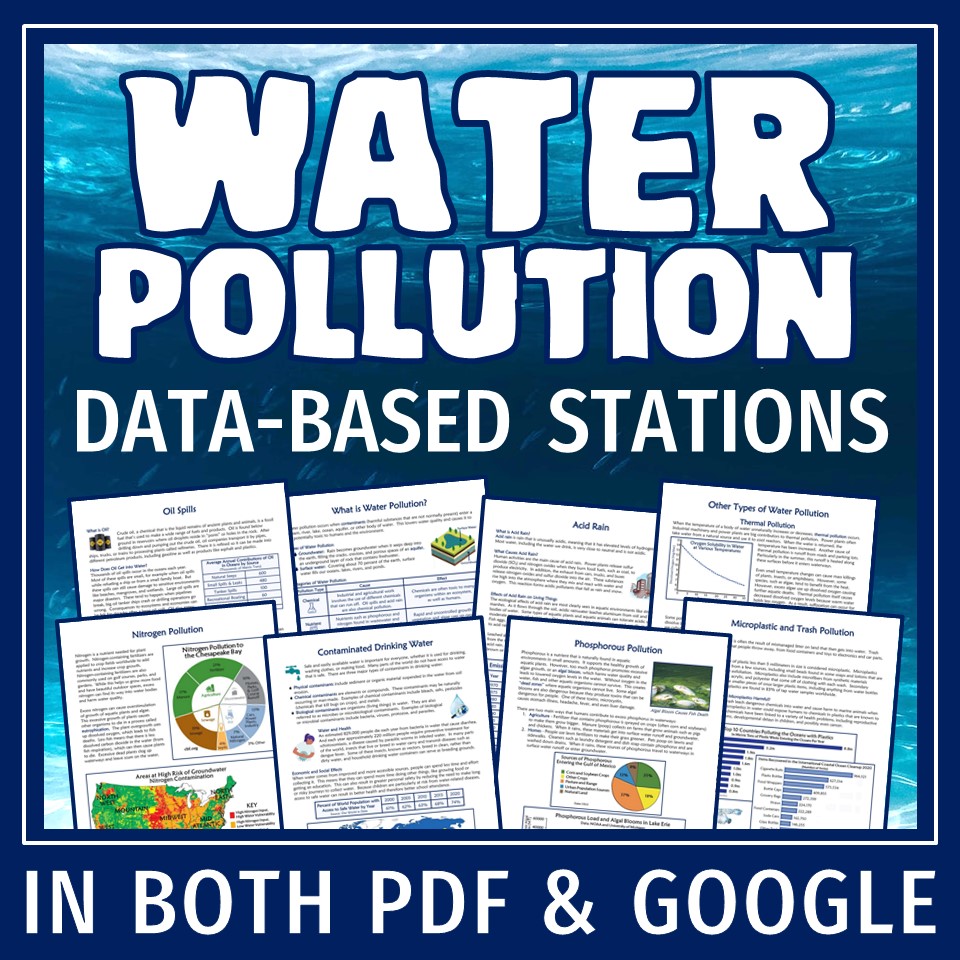
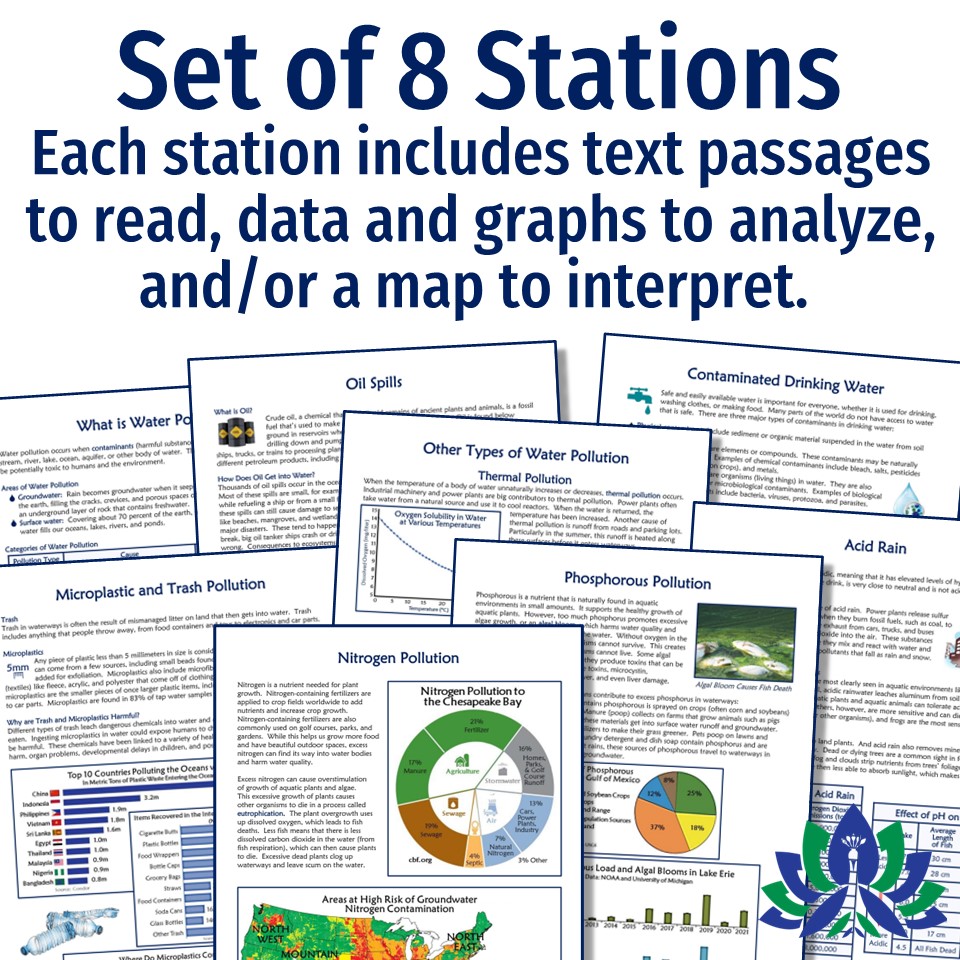
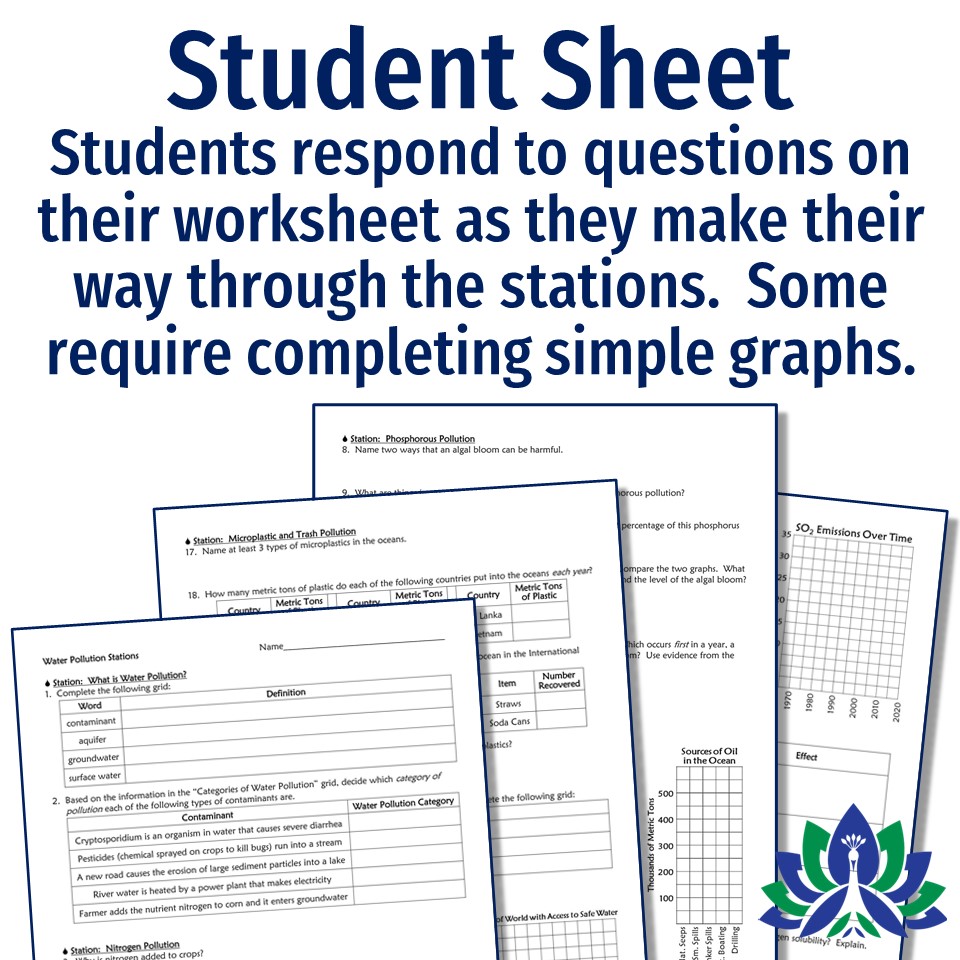
As students move through the stations, they read brief information related to the main topic of the card, such as acid rain or oil spills. The student worksheet asks a few reading comprehension questions but also asks kids to analyze some given data, as well. The data, including graphs, infographics, and data tables, are not complicated, so it’s perfectly suited for the upper middle school level.
The Water pollution station topics include:
- What is Water Pollution?: Get kids started with learning about surface water versus groundwater and the different types of water pollution. Then, students practice pulling information from a graphic organizer.
- Nitrogen Pollution: Read about how nitrogen pollution happens and how it causes eutrophication in water sources. Analyze a map of nitrogen pollution of groundwater in the United States and an infographic about how nitrogen enters a bay.
- Phosphorous Pollution: Learn about how phosphorus enters waterways and how it causes algal blooms. Pull information from graphs of sources of phosphorous and how phosphorous and algal blooms are related.
- Oil Spills: Read about how oil gets into aquatic ecosystems and what effects it has. Analyze information from a data table about sources of oil in the ocean and review an infographic about organisms affected by the Deepwater Horizon oil spill.
- Microplastics: Read about what microplastics are, how they get into the ocean, and their harmful effects. Analyze three graphs: top plastic-polluting countries, types of plastic litter in the ocean, and sources of microplastics.
- Contaminated Drinking Water: Find out the difference between physical, chemical, and biological contaminants and the importance of clean drinking water. Analyze a world map of the rate of access to clean drinking water and pull information from a data table.
- Acid Rain: Read about how acid rain forms from chemical emissions and its effects on living things. Use two data tables to obtain information about how different emissions have increased over time and the impact of acid rain on fish size.
- Other Types of Water Pollution: Read brief passages about thermal pollution, particulate matter pollution, and radioactive water pollution. Analyze a graph, observe a photograph, and obtain information from a data table.
Real-World Application
I end my water pollution activities with an incredible STEM/PBL project I found in Science by Sinai’s TPT Store. She designed an activity where kids design and test a water filter system.
The activity starts with a very engaging hook. When kids enter the room, a super nasty, yucky, gross, scowl-inducing pitcher of “sewage” is sitting on my demo table.
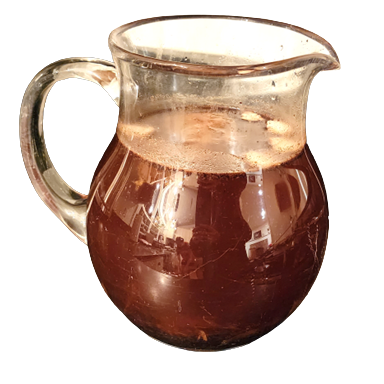
“What IS that?” “NASTY!” “We don’t have to drink that, do we?!”
That’s the type of thing I want to hear! (And the answer is, of course, yes we often do drink filtered water!)
I introduce the project as a challenge to clean the nasty water in front of them. Science by Sinai’s project guidelines give the kids directions as to how to make the filter from a water bottle and supplies such as sand, pebbles, charcoal, cotton balls, coffee filters, paper towels, cloth, sponges, face masks, etc. What they use to create the filter is up to them – hence the challenge! (The great thing about this project is that the supplies are basically free, and students don’t need to buy anything special to participate.)
On the due date, we test the filters in class. I add about 100ml of “sewage” to each student’s project, and they get to watch their filters in action. Of course, many don’t work well the first time, so I then allow students to rethink and redesign their projects – an excellent opportunity to model the engineering design process!
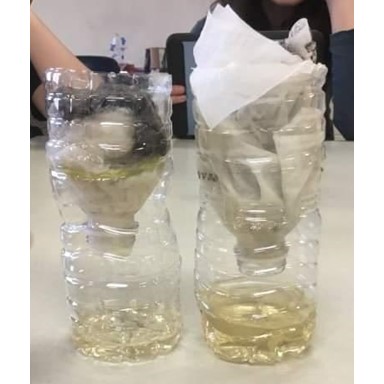
After the redesign and second test, students answer the reflection questions provided in Science by Sinai’s project guidelines.
I highly recommend this project while teaching water pollution because it helps kids to envision themselves as part of the solution!
When Teaching Water Pollution is Done…
At the end of this water pollution activities set, my hope is that my students have a much broader view of water pollution, its causes, and its effects. And, I hope I’ve taught them in a way that has engaged them enough to want to participate in the solution!
If you are teaching a larger unit on pollution, you may also be interested in my resources for air pollution, land pollution (garbage), or biomagnification. Click on each for more information!



Let’s Connect!
If you like these water pollution activities, please follow me on Instagram where I offer science teacher tricks and tips! And you can follow me on Teachers Pay Teachers, too!
Share it:
- Read more about: Environmental Issues

